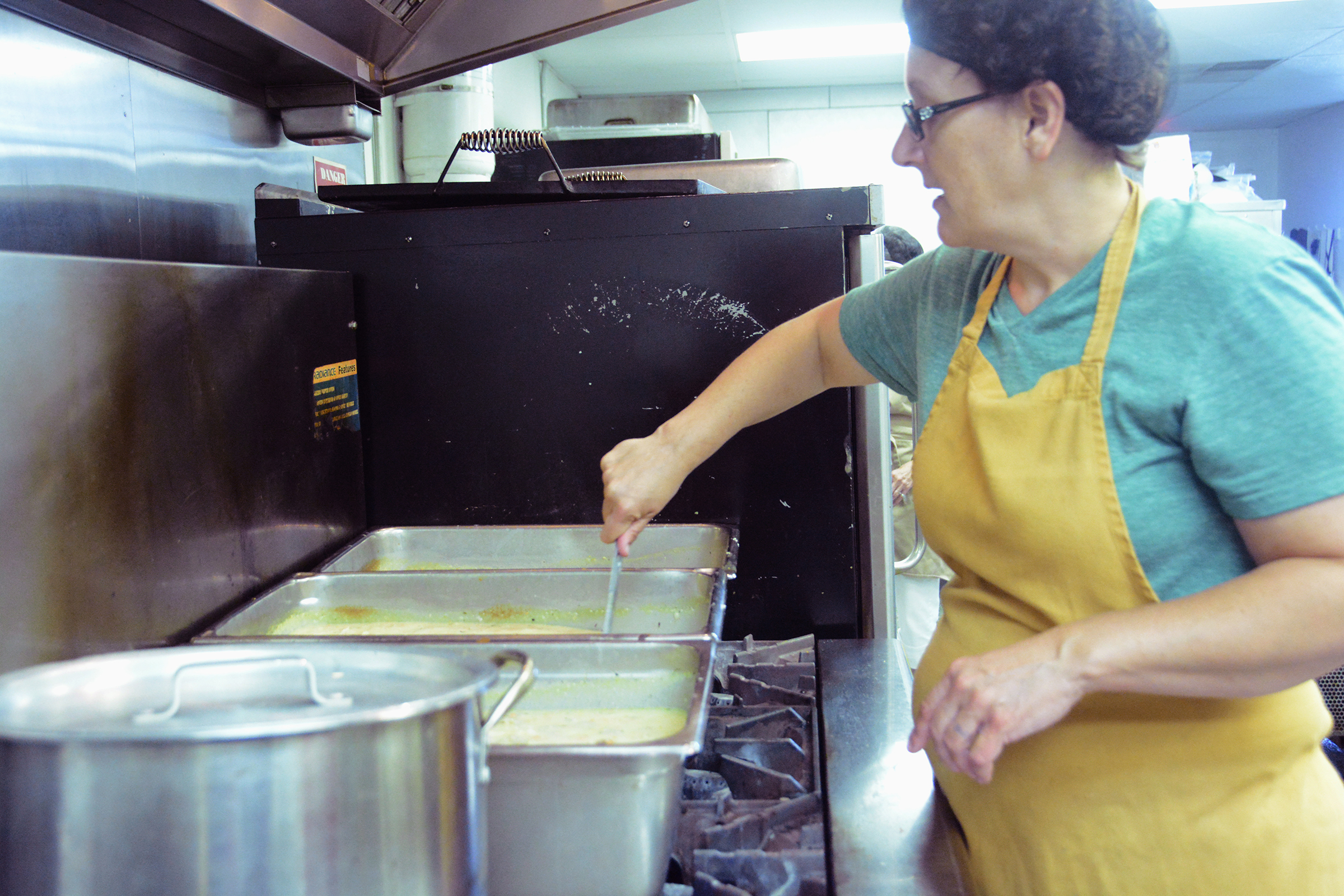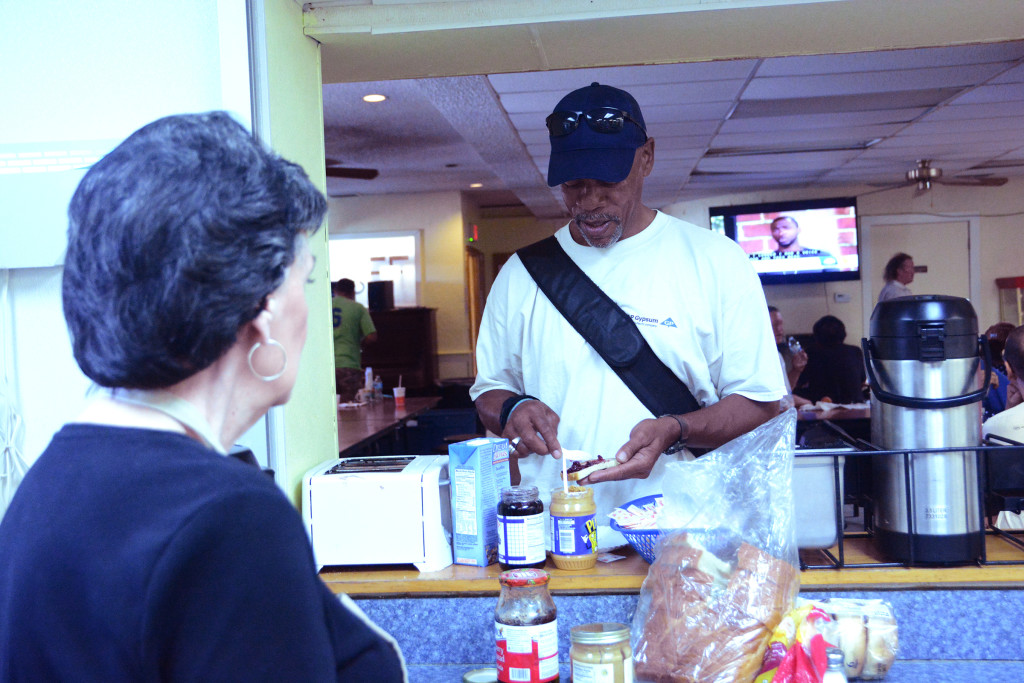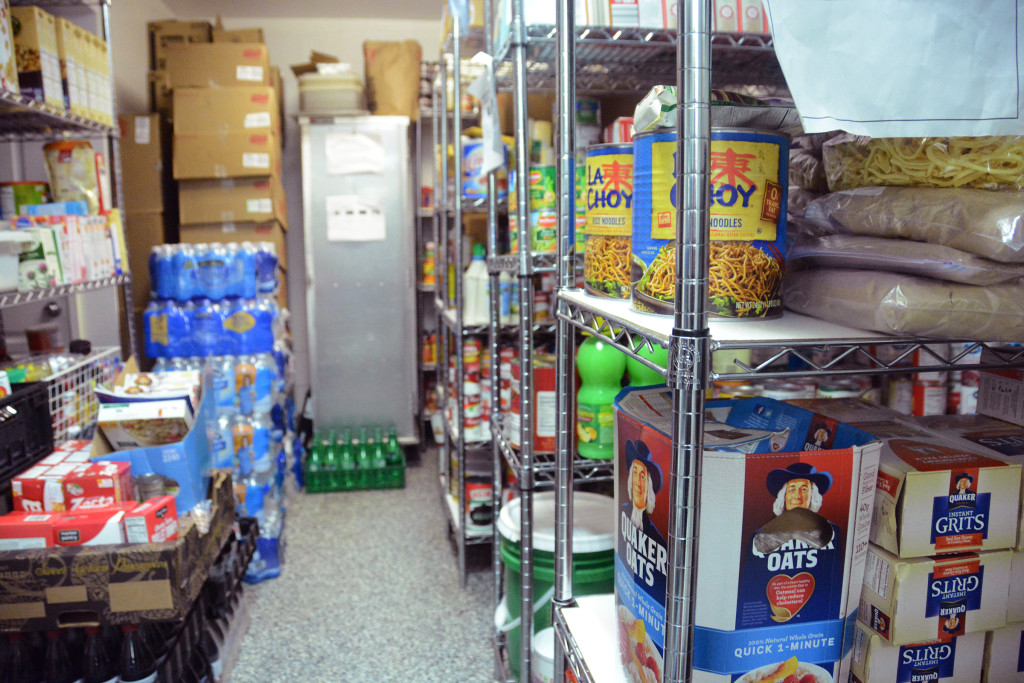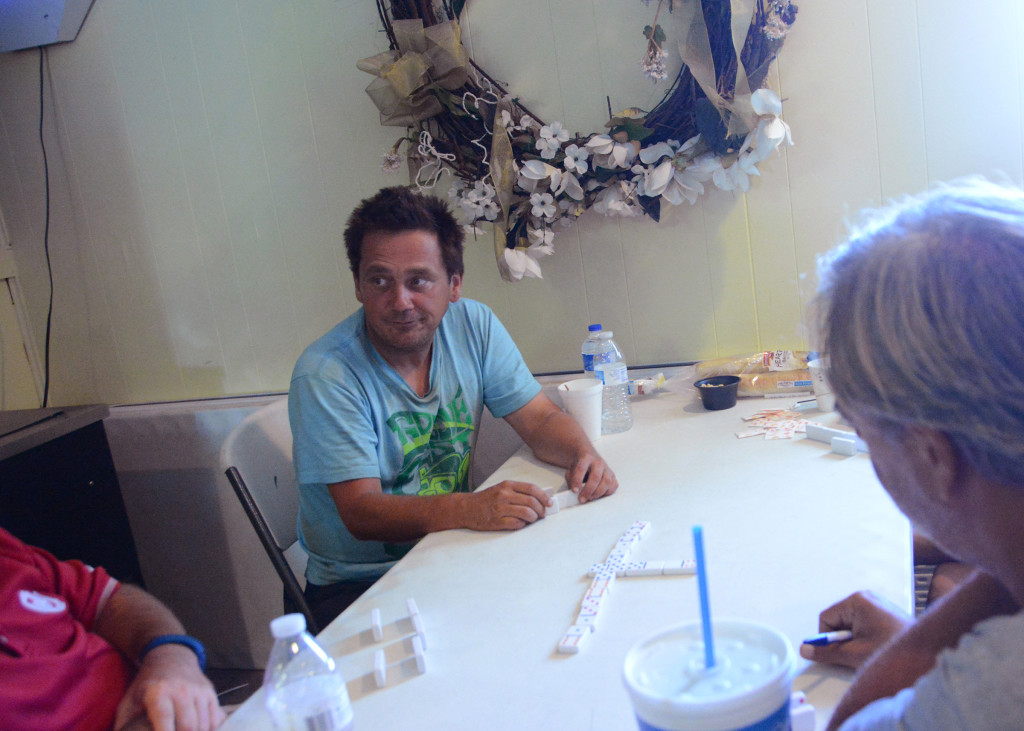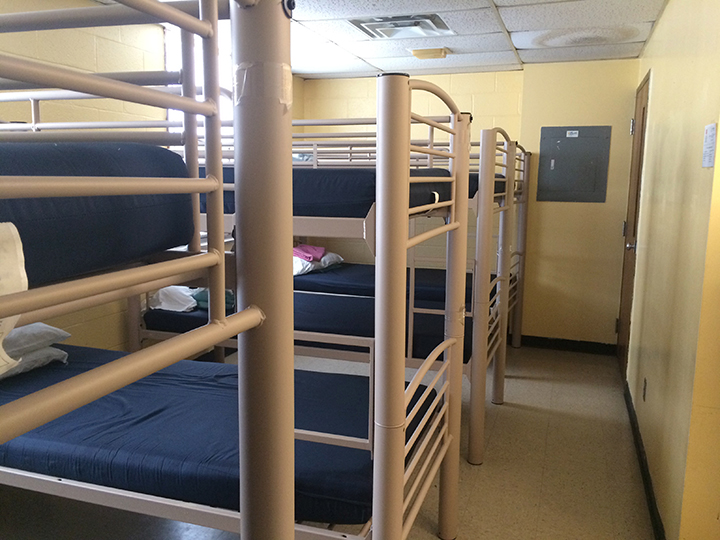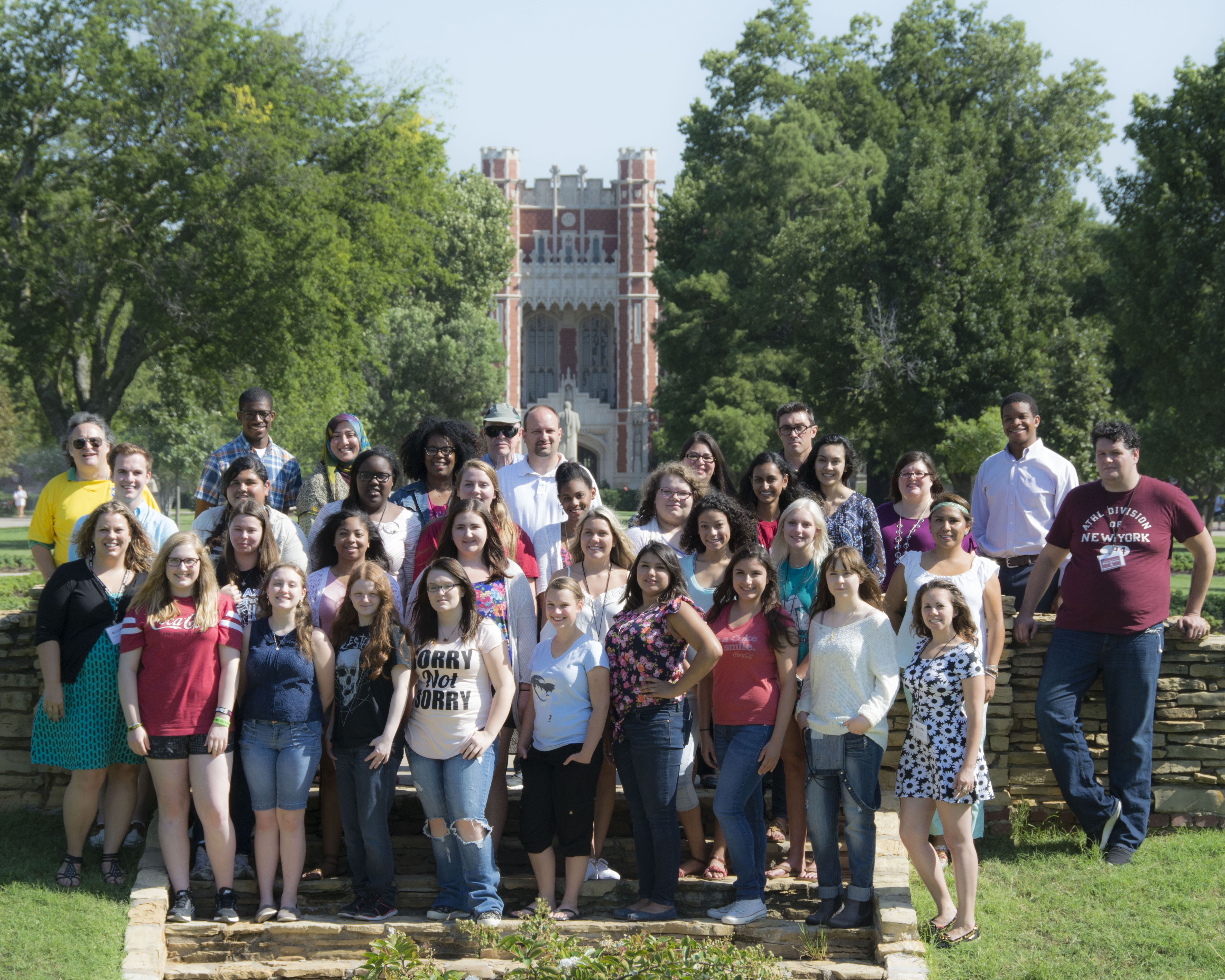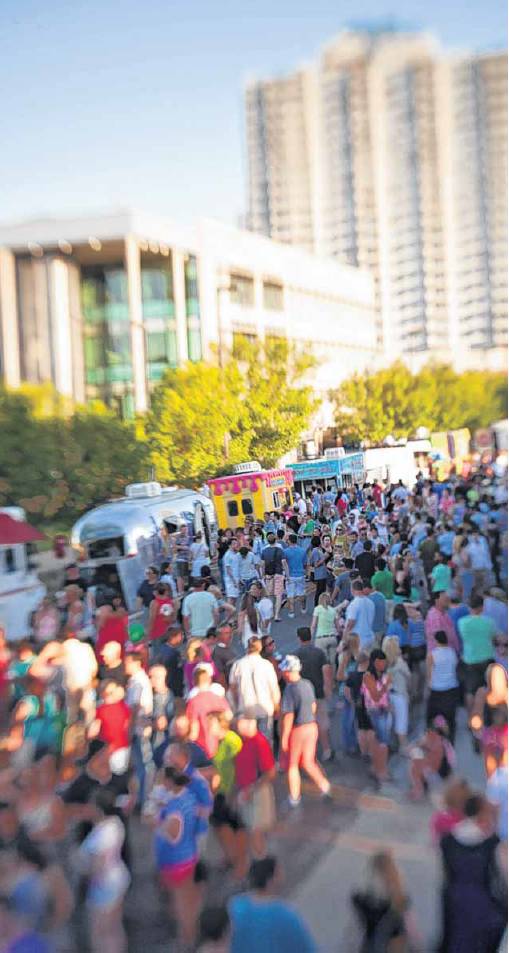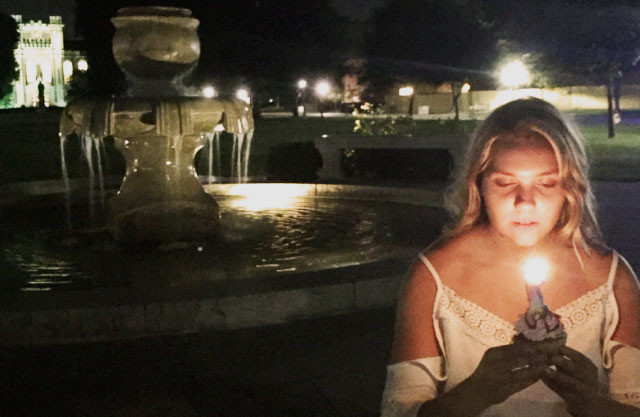When someone walks into Food and Shelter Inc., they are likely to discover its small-town aura. Everybody seems to know everybody else. People eat and talk at the same time. They joke, play games such as dominos, watch TV or use the two computers.
Upon entering the dining area, to the right is a wall covered with posters advertising local events and outreach programs. Under the posters are boxes of fresh fruit. Atop and under a table to the left are computers, games, puzzles and books.
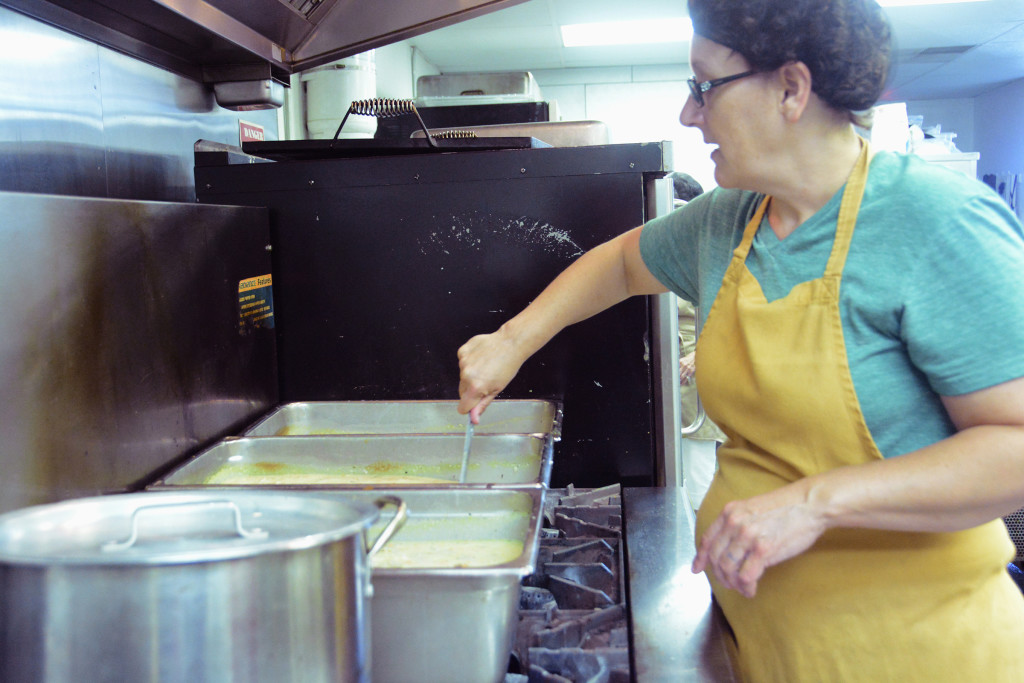
Straight ahead is the kitchen, which prepares breakfast at 8:30 a.m. and lunch at 11 a.m. all week. If no meal is being served, the counter is stocked with bread, doughnuts and coffee. Amy Radford has been the kitchen manager for about four years, after retiring from her career as a fine-dining chef, she said.
“I was excited because I thought I could volunteer more at Food and Shelter, and then they offered me a job,” Radford said. She usually arrives for work at 6 a.m., and checks the pantry before deciding on the dishes for the day.
“Whatever I have to work with, I don’t plan menus. I don’t do any of that,” she said.
The shelter opened in 1983. Its hours are typically 8 a.m. to 5 p.m., but they are extended during extreme summer heat.
According to http://www.usclimatedata.com, the average temperature in July in Norman was 92 degrees, making the shelter a popular refuge for the homeless.
Among its services is a free store open Tuesdays. It stocks donated items such as toilet paper, diapers, blankets, pillows and coats. At the day shelter are a free clothes closet, showers, bathrooms, laundry rooms, a television, books and games.
“We have a really involved community,” Radford said. “They show up, and they donate stuff. We put a call out for stuff that we need, and we get it. We put a call out for bottled water, and tons of it came in. We also get fresh produce from people’s personal gardens.
“I spend a maximum of $100 a month on food — we serve 106,000 meals a year for less than $12,000 a year,” she said.
People “walk in and get meals, no questions asked,” Radford added.
Among the regulars at the shelter is a man who identified himself as Aaron Ash. Perched on a curb in the parking lot, he chatted briefly with a passerby and then rose to chat with a visitor.
“I’ve been homeless for three years, and I have been coming to Food and Shelter the whole time,” he said. “I mostly just come here for food and to play dominos. They used to let us sleep in the dining area, but they quit doing that.
“I try to stay hydrated, pour water on myself. They keep water in ice coolers out here for us. This shelter and the library are the coolest places. I go to the Salvation Army sometimes also for food, and if they have any beds open,” Ash added.
The Salvation Army emergency shelter, which is 1.1 miles north of Food and Shelter, allows people to stay as many as five consecutive nights. It has 16 beds for men and eight for women.
“The reason we have more beds for men is because of the fact that when the place was built, it was thought that there were more homeless men than women,” Leonna Chapman, director of social services, said. “It changes every year, whether more women or men show up, but last summer our women’s shelter was always full.”
The shelter offers an extended stay for as many as 30 days, but occupants must show proof of employment after the fifth day. The facility also will help people locate a place to live.
Breakfast and dinner also are served at the Salvation Army shelter. The facility also includes an emergency food pantry, where if people show residency and employment information, they receive food, often to take elsewhere.
During the summer, some visitors stop by during mealtime simply to get a glass of water and cool off, Chapman said.
“We have seen an increase in women and children coming in over the past five years, and we do have a lot of the younger people come in, usually ages from 18 to 24,” she said. “But I do want to make sure people know that homelessness is not created by laziness. These are not lazy people.”

